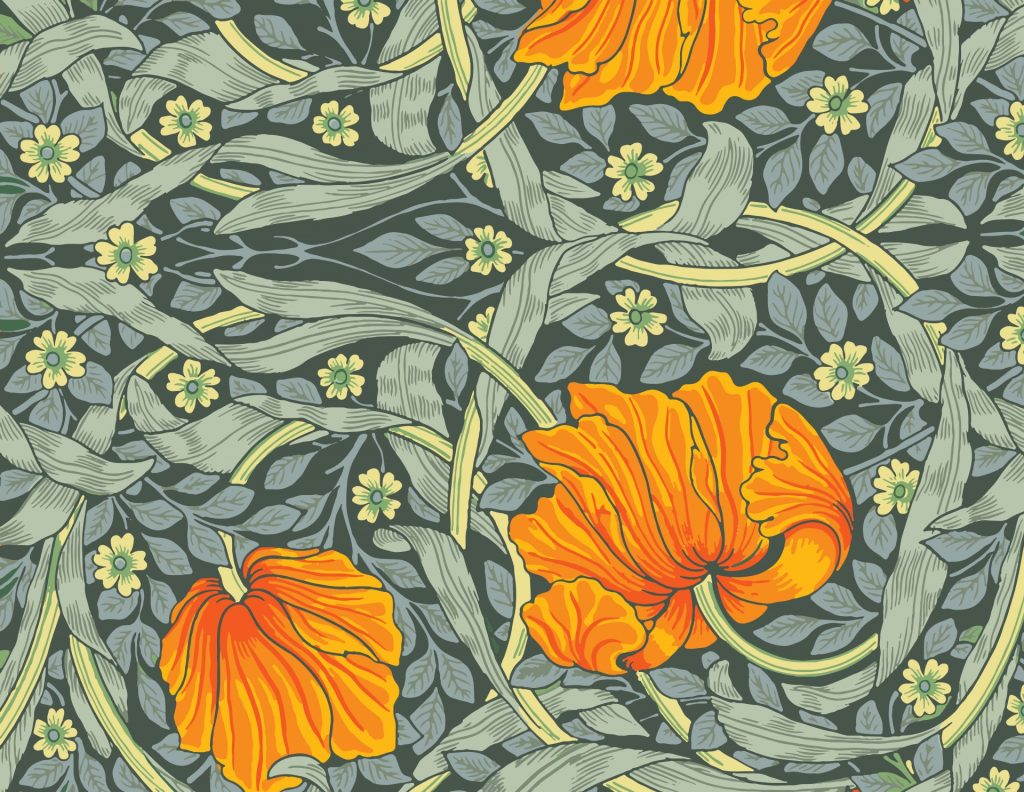
When you hear the name William Morris, you might picture bold wallpaper—vines, flowers, and patterns twining across entire walls. But Morris was more than a wallpaper designer. He was one of the founding voices of the Arts and Crafts movement, and his ideas about beauty, honesty, and craft still shape how we design our homes today.
Here are five ways William Morris changed the way we think about design:
1. He Rebelled Against Fakery
Victorian design often relied on illusion—pine painted to look like oak, wallpaper pretending to be velvet, fireplaces painted to resemble stone. Morris despised this kind of deception. In his own home, the Red House, he left brick exposed rather than covering it with stucco or paint. His wallpapers and textiles took inspiration from nature, but they didn’t try to mimic it. They were honest patterns on honest paper.

2. He Connected Beauty with Morality
For Morris, bad design wasn’t just ugly—it was immoral. Factory-made goods, he argued, robbed workers of dignity and dulled consumers’ moral senses. By contrast, hand-made, well-designed objects honored both maker and user. His famous maxim summed it up: “Have nothing in your houses that you do not know to be useful, or believe to be beautiful.”
3. He Elevated Wallpaper to Art
Before Morris, wallpaper was mostly background decoration. He transformed it into something worth studying. His hand-block printed designs drew directly from plants and animals he observed in nature. They were bold, rhythmic, and organic—wallpapers that invited you to pause and look closely.

4. He Planted the Seeds of Democratizing Art
Morris believed beauty belonged in every home, not just in elite galleries. That’s why he worked in media like furniture, textiles, and wallpaper—things people lived with every day. The contradiction, of course, was that his uncompromising standards made his work expensive. But the principle—that ordinary homes deserve art—was powerful. Later designers found ways to adapt his ideas for mass production, fulfilling his vision.
5. He Inspired a Movement
More than any one product, Morris gave us the Arts and Crafts movement. His vision of honest materials, beauty in daily life, and dignity in work rippled outward into furniture (Gustav Stickley), architecture (Frank Lloyd Wright), and even suburban housing (the Craftsman bungalow). His influence is still alive whenever we value the handmade, choose quality over quantity, or insist that useful things can also be beautiful.
The Takeaway
William Morris gave us more than beautiful wallpaper. He gave us a reminder: don’t just fill your home with things. Choose the objects that matter. Make them useful. Make them beautiful. And your home will be better for it. For a much deeper dive into all of these points, check out Episode 424 of Home in Progress.

